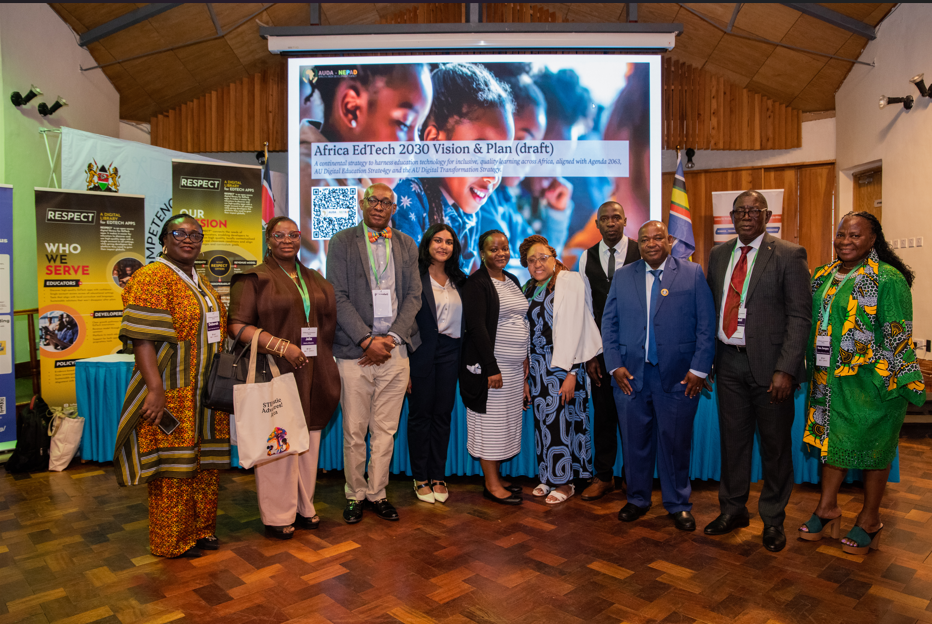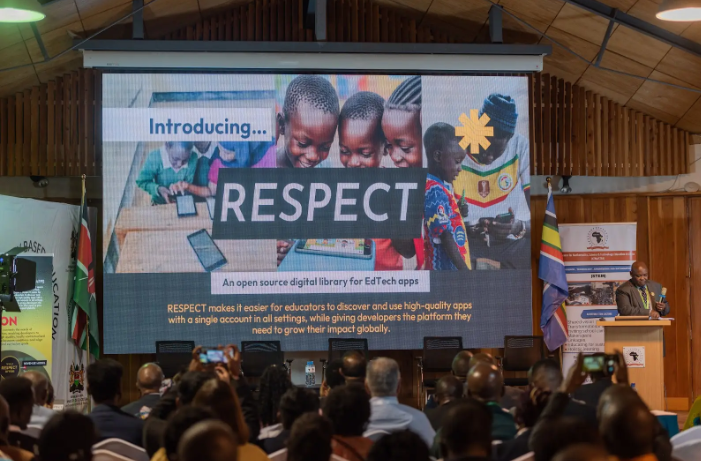Draft strategic roadmap and policy framework envisage a future where every African learner has to access locally developed digital education by 2030, transforming the continental economic and social landscape.

NAIROBI, Kenya – 22 July 2025 – The African Union Development Agency-NEPAD (AUDA-NEPAD) today launched the draft African EdTech 2030: Vision, Plan and Policy framework for consultation and stakeholder input. The ambitious new vision sets out an achievable roadmap to transform African education systems through technology whilst positioning the continent as the global leader in mobile-first, locally-relevant digital learning. The vision, mission and policy framework were unveiled during the STEMtastic Adventures! Africa symposium.
Aligned with Agenda 2063, STISA-2034, CESA 2026-2035, and the AU Digital Transformation Strategy, the vision, plan and policy framework envisage a Pan-African EdTech transformation grounded in continental leadership and local innovation.
“The draft vision, plan and policy framework aim to catalyse an accelerated transformation in education for the continent: leveraging local innovation and leadership in Edtech to make Africa’s education systems more inclusive, resilient and innovation-driven, as envisaged by Agenda 2063 and the AU Digital Education Strategy,” Said Dr. Barbara Glover, Program Officer, Integrated Vector Management Programme (IVM), AUDA-NEPAD.
Africa’s leapfrogging opportunity
The framework capitalises on Africa’s unique position to bypass traditional educational infrastructure constraints. Just as mobile money succeeded in Africa before other regions due to limited traditional banking infrastructure, digital education can surpass conventional classroom-based systems because the continent isn’t constrained by legacy educational infrastructure.
“Schools can harness offline and mobile-first technologies to reach marginalised learners,” noted framework developers, highlighting how solutions designed for intermittent connectivity and basic smartphones can be exported globally to serve similar conditions worldwide.
With smartphone ownership among teachers exceeding 90% in South Africa and ranging between 30-65% in Ghana, Nigeria, and Kenya, Africa possesses foundations for mobile-first educational interventions that other continents are still developing.
A comprehensive vision for 2030
The framework establishes an ambitious yet achievable vision: “Every African learner—regardless of gender, location, disability or background—has affordable access to high-quality, localised digital learning resources on reliable devices, within an inclusive ecosystem that fosters innovation and entrepreneurship.”
In practical terms, this means a student in rural Tanzania could access quality chemistry lessons in Kiswahili using easy to access offline capable devices, while teachers across the continent could share resources seamlessly.African-developed educational apps could compete globally whilst serving local needs first. The harmonised environment enables a teacher in Kenya to use courseware developed in Nigeria, whilst student data remains nationally secure but contributes to continental learning insights.
Addressing critical educational challenges
The Vision & Plan responds to urgent continental challenges. With Africa’s youthful population—over 60% under age 25—projected to reach 2.5 billion by 2050, quality education becomes critical for sustained growth. However, significant barriers persist: an estimated 30 million primary-age children in Sub-Saharan Africa remain out of school, whilst Africa will need 17 million additional teachers by 2030 just to maintain universal access.
Only approximately 40% of African primary schools have internet access, and UNICEF reports that approximately 75% of African youth lack digital skills required by modern economies. COVID-19 exposed these gaps when most countries couldn’t pivot to remote learning.
“It is time for a Pan‑African EdTech transformation: one that turns connectivity and content investments into improved learning, inclusion, and economic opportunity for every learner,” emphasised John Kimotho, highlighting the urgency of coordinated continental action.
Strategic framework and implementation
The African EdTech 2030 Vision & Plan advances six strategic objectives:
Access and infrastructure: Expand digital access via low-cost devices, solar solutions, and offline-first technologies, building on the fact that smartphone ownership among teachers already exceeds 90% in South Africa and ranges between 30-65% in countries such as Ghana, Nigeria, and Kenya.
Courseware development: Promote locally made, curriculum-aligned, multilingual digital courseware, including successful examples such as Senegal’s Wolof-language XamXam platform serving 1.2 million users.
Teacher capacity: Upskill teachers in digital pedagogy, content curation, and data use with specific emphasis on fostering positive attitudes and building confidence in using technology for learning.
Interoperability and standards: Institutionalise vendor-neutral interoperability frameworks through AUDA-NEPAD’s standards-based vendor-neutral EdTech policy framework.
Policy and governance: Support data privacy, equitable funding, and regulatory harmonisation across the continent.
Data and research: Generate and use robust data and research to guide policy, monitor learning outcomes, and ensure continuous improvement.
Implementation occurs through three phases:
- Foundation building (2024-2026) develops continental policy frameworks enabling cross-border content sharing and establishes technical standards.
- System integration (2026-2028)scales interoperable Digital Public Infrastructure, enabling single sign-on access to multiple educational applications whilst deploying regionally developed courseware.
- Consolidation and export (2029-2030) positions Africa as a global EdTech exporter whilst launching the Pan-African EdTech Innovation and Research Hub.
The Digital Public Infrastructure as a public good approach means teachers won’t juggle multiple passwords and platforms—instead accessing integrated educational tools through unified systems whilst maintaining local language and curriculum relevance.
Stakeholder mobilisation and sustainability
Clear roles for all stakeholders are encapsulated in the plan and framework, creating accountability where it is needed.
- Governments lead policy formulation, funding, and alignment with national curricula.
- Regional bodies coordinate standards, research, and shared platforms, whilst development partners provide catalytic funding and technical expertise.
- The private sector develops infrastructure, devices, and platforms suited to African contexts.
- NGOs and foundations pilot models, build capacity, and conduct impact assessments.
- Communities advocate for EdTech and support student engagement.
Sustainability relies on blended finance models combining grants, equity, and subsidies, Digital Public Infrastructure investment promoting shared, scalable infrastructure, and partnerships with organisations such as GPE, UNICEF, and UNESCO to enable contextualised alignment with global priorities.
Call for continental collaboration
AUDA-NEPAD’s mission through this framework is to coordinate continental efforts by aligning policies and standards that enable open, vendor-neutral technologies; investing in digital infrastructure and platforms that scale affordably; strengthening educator and leadership capacity in digital pedagogy; encouraging local innovation through incubation, financing and partnerships; and using data-driven monitoring and governance to continually improve equity and outcomes.
The draft African EdTech 2030: Vision & Plan represents a potential turning point to harness technology for inclusive, relevant, and resilient education. All stakeholders—governments, educators, private sector actors, communities, and partners—are invited to review and comment on the vision and plan to ensure it enables the collective action envisaged.
“Through coordinated policy, local innovation, and equitable infrastructure, Africa can leapfrog legacy education barriers and build a globally competitive digital learning ecosystem,” concluded John Kimotho. “By learning from frontrunners like Kenya, Rwanda, and Mauritius and sharing lessons across borders, Africa can lead a new era in global EdTech.”




